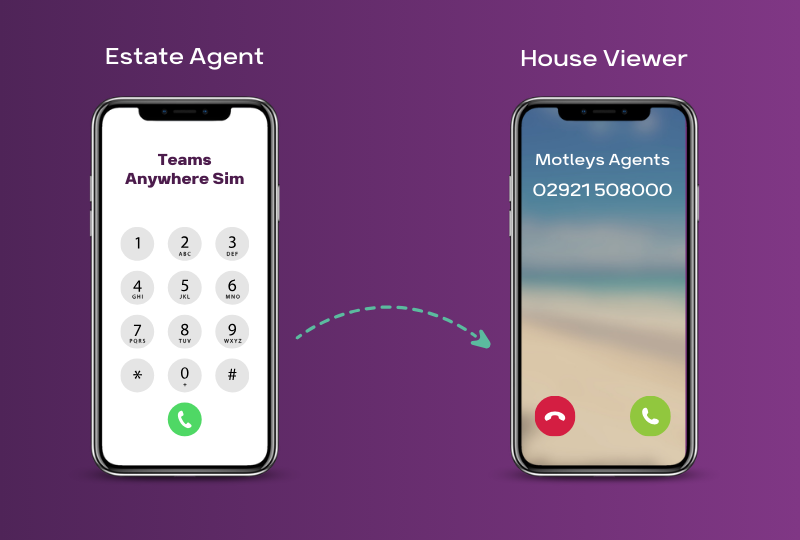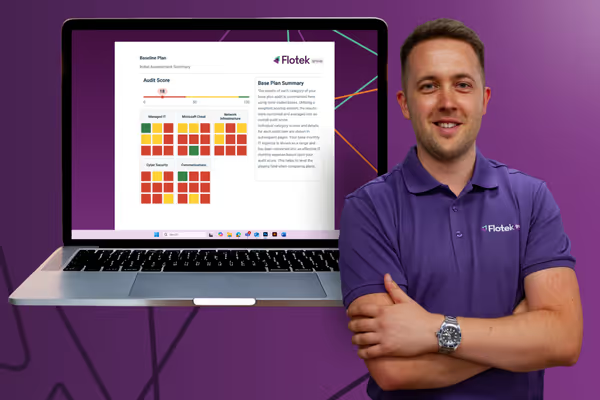
A Walkthrough: Transitioning To A VoIP Service Provider
Step One: Choosing A VoIP Provider
Voice over Internet Protocol (VoIP) phone services have become increasingly popular in recent years as an alternative to traditional landline phone services. Making the switch from a traditional phone system to a VoIP system can seem daunting at first, but with some planning and preparation, the transition can be smooth and straight forward. In this article, we will give you a general overview of the process of transitioning from a traditional phone service to a VoIP service provider. It’s worth noting that the specific steps and timelines involved can vary depending on your chosen provider and business needs, but this will outline the typical phases involved for most transitions to give you a good idea of how it works.

The first step is choosing a reliable VoIP service provider. It's important to research different providers and compare factors like cost, features, reliability, and customer support. Some key things to look for in a provider include:
- Reliable uptime and voice quality - Look for a provider that can deliver close to 100% uptime and offers clear call quality.
- Scalable service - The provider should be able to easily accommodate your business as it grows.
- Features - Features like auto attendants, call routing, voicemail transcriptions, and conferencing can help maximise productivity.
- Customer support - Choose a provider with multiple customer support channels like phone, email, and live chat.
- Security - They should use encryption and other measures to protect calls and data.
- Cost - Compare monthly fees, equipment costs, international calling rates and other charges.
Once you've researched providers thoroughly and compared costs and features, you can choose one that best fits your business's needs and budget.
Step Two: Getting Compatible Phones

After choosing a provider, you'll need to purchase VoIP phones or Phone Adapters (ATAs) that are compatible with their service. The provider can specify which models will integrate smoothly. Two common options are:
- VoIP phones - These are hardware phones made specifically for VoIP service. They simply plug into your router via ethernet.
- ATAs - An ATA allows you to use traditional analogue phones with VoIP by converting the signal. The ATA plugs into your router and you connect a normal phone to it.
Your provider will have recommendations on the best equipment options. Consider how many phones your business needs, and look for affordable models. The provider may also offer equipment bundles or rentals which can save on upfront costs.
Step Three: Porting Your Numbers

One big advantage of switching to VoIP is that you can usually keep your existing phone numbers. Contact your new provider to start the number porting process. This may take anywhere from a few days to a few weeks depending on your old provider. Maintain your old phone service during this time until the new service is activated. To ensure no incoming calls are missed, set up call forwarding on your old numbers to your new VoIP numbers during the transition. Your new provider can assist with call forwarding setup. Make sure to also update website contacts, directories, advertising materials and anywhere else your phone number is listed.
Step Four: Setting Up The New System

With accounts set up, hardware ready, and number porting in process, you can start setting up your new VoIP phone system. Step-by-step instructions will depend on the provider, but some typical steps include:
- Connecting VoIP phones and/or ATAs to your router using ethernet.
- Installing any required VoIP software on computers for softphones.
- Configuring any virtual numbers or extensions.
- Setting up voicemail boxes.
- Creating recordings for auto attendants and greetings.
- Assigning call routing rules, ring groups, call forwarding settings and more.
Your provider will guide you through the setup process specific to their system. Follow their instructions carefully and ask for assistance if anything is unclear. Testing call quality between devices is also a good idea during setup.
Step Five: Training Employees

Once the system is installed and fully functional, the next important step is thoroughly training employees on its use. Even experienced phone users will need guidance on the new system's features. Consider setting up group or one-on-one training sessions to:
- Explain the basics of how VoIP systems work.
- Demonstrate making and taking calls on the new phones and softphones.
- Highlight special features like transfers, holds, conferencing etc.
- Ensure everyone can access voicemail and set up greetings or out of office messages.
- Provide handouts or guides they can refer to later.
With training complete, employees can now start leveraging the new communication system to improve productivity and customer service.
Step Six: Cutting Off The Old Service

Finally, once number porting is fully complete and your VoIP system is live, you can contact your traditional phone provider to terminate service. Make sure porting is confirmed first so you don't lose number access. Also turn off or return any rented equipment like handsets or PBX boxes. Keep an eye on your old provider's final bill as well - unused account credits or refunds for early termination may apply. With these last administrative tasks done, you can enjoy all the benefits of your upgraded VoIP phone service! You may also like: A Guide On How To Integrate VoIP Services With Your CRM
Our Final Word
Transitioning to a VoIP system involves steps like choosing a provider, obtaining compatible phones, porting numbers, installing hardware or software, training staff, and terminating the old service. While the process takes coordination, planning ahead makes the switch manageable. The specific timelines and steps involved will depend on your chosen provider and equipment, but following the key phases outlined here will help facilitate a smooth transition to VoIP. If you’re ready to welcome VoIP into your business, we’re here to help. Get in touch today or request a callback.
Frequently Asked Questions
How do you switch to VoIP?
Here are the key steps to switching from a traditional phone system to VoIP:
- Research and select a reputable VoIP provider that fits your business needs and budget. Look for providers that offer the features, service quality, and support you require.
- Purchase VoIP phones or ATAs compatible with the provider's service. Your provider can recommend specific models. Consider how many phones or adapters you need for your users
- Contact your chosen VoIP provider to initiate number porting so you can keep current phone numbers. This process can take several weeks to complete.
- Install VoIP equipment like phones, ATAs, and any software. Follow your provider's instructions carefully for setup. Test call quality between devices.
- Train all employees on how to use the new VoIP phone system and its various features and abilities. Give hands-on demonstrations and guides they can reference.
- Once number porting is completed and the new system is fully functional, terminate your old phone service contract. Remove any rented equipment.
How long does it take to switch to VoIP?
The timeline for switching from traditional phone services to VoIP can vary depending on a few key factors:
- Number porting time - Porting your existing numbers to the new provider generally takes 2-4 weeks on average, and this process must complete before the old service can be terminated.
- Equipment shipping - If new VoIP phones are ordered, factor in shipping time. This typically takes 3-7 business days within the same country.
- Service activation - Once equipment and numbers are ready, your VoIP provider may need 1-3 business days to fully activate your account and features.
- Employee training - Training your staff on the new system could take anywhere from a few hours to several days depending on the number of employees. Also allow time for them to adjust to the new system after training.
- Contract termination - Finally, ending the old phone contract often requires 30 days advance notice.






.jpg)



























.avif)




%20(1).avif)
.avif)
.avif)
.avif)








.avif)
.avif)
%20(1).avif)
.avif)
.avif)